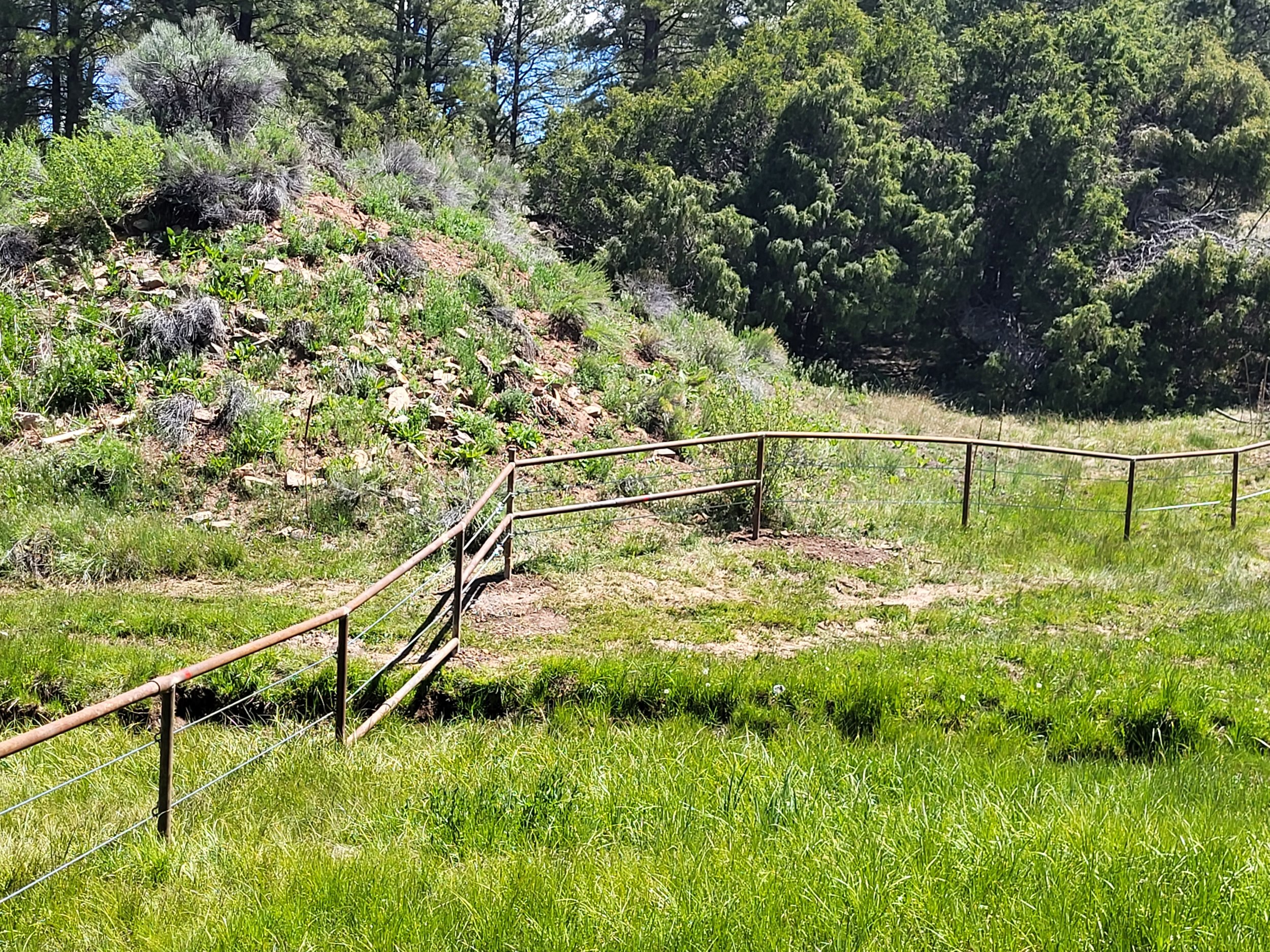Pipe rail fence constructed at Shush Kin Fen
Shush Kin Fen is a histosol fen located at the headwaters of Bluewater Creek in the heart of the Zuni Mountains. A histosol fen is a peat-forming wetland, which means its rate of organic matter accumulation exceeds its rate of decomposition. Fens have high organic carbon content, making them a major sink for atmospheric carbon. They are also biodiversity hotspots, home to rare plants, insects, and small mammals while providing forage for large mammals. Fens are an incredibly rare wetland feature in New Mexico, typically taking thousands of years to form.
Over the past decades, overgrazing, trampling, and compaction by cattle have degraded Shush Kin Fen to the point that it no longer perennially holds water. The objectives of the Shush Kin Fen restoration project are to restore the structure and function of the fen, enhance wildlife habitat, reduce erosion, and improve water retention in an increasingly arid landscape. This project is being carried out through the support of the New Mexico Department of Game and Fish, Bat Conservation International, Rocky Mountain Elk Foundation, and New Mexico EMNRD – Forestry division.
Pipe rail fence constructed at the headwaters of Bluewater Creek
During the last week of June, crews constructed a pipe fence at Shush Kin Fen to prevent cattle from entering the sensitive wetland area. In addition to fencing, diverse methods will be used to restore vegetation structure, including filling in between hummocks and smashing them down. Through these measures, the Mt. Taylor Ranger District hopes that Shush Kin Fen will, in time, return to its former condition. The District is also working with Alamo Navajo to restore three nearby springs that provide habitat for populations of rare native fish, including the Rio Grande sucker and Rio Grande chub. Here, pipe rail fencing was installed this summer and a barbed wire pasture fence will be erected this fall to help keep cattle in a better rotational pattern. The District and its partners are currently developing a monitoring plan to track the recovery of these valuable riparian habitats.
Read more about the Shush Kin Fen restoration project here.



